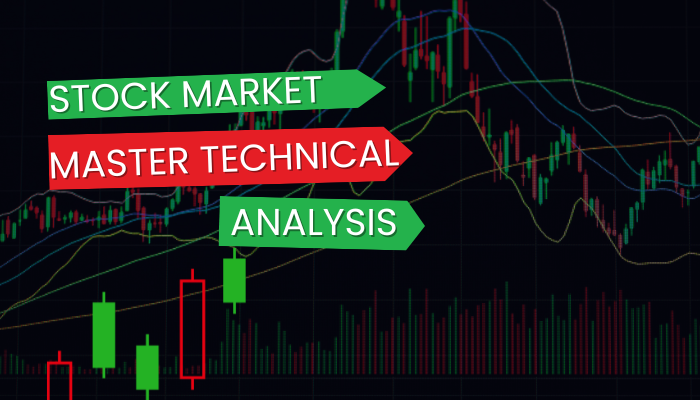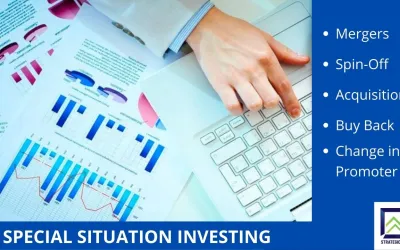Mohnish Pabrai’s Journey and Lessons
Mohnish Pabrai, a very successful investor, is the Managing Partner of Pabrai Investment Funds. The Fund started in 1999. His only Equity Fund has outperformed the Benchmark Indices for many years. As of April 2021, Pabrai Investment Funds managed a total of $636.8 million in assets. Here are some key aspects of Mohnish Pabrai’s life.
Mohnish Pabrai’s father was a serial entrepreneur who used to be successful for some time. But, the problem was that his father used to enter these businesses with less capital and a lot of leverage. After some time, something would go wrong and since the businesses were highly leveraged, the business would be in trouble. Hence, Mohnish Pabrai and his brother would sometimes figure out how to run these businesses for one more day.
He saw the entire life cycle of various businesses by the time he was 18 years old, learning from his father’s experiences. He could figure out businesses and business models at a very early age. He grew up in Mumbai and Delhi. He then shifted to the USA in 1983. He was clueless after he completed high school as regards what to do ahead in life. Then, he went on to study engineering at South Carolina’s Clemson University. Since his family was in financial problems, he needed to get a job. While he shifted to International Marketing as a part of his job, it gave him an opportunity to understand how the business as a whole worked. It gave him tremendous insights into sales and marketing functions, along with computer engineering which he already knew. Then, he went on to launch his IT Consulting firm, Transtech in 1991, which he eventually sold. He founded the company with part-funding from his credit card and his own 401K Account.
During the dot com bubble, he found a very interesting phenomenon. He found that many other non-tech stocks were quite cheap. He found that at the time when Nasdaq (index representing tech stocks) peaked, Berkshire Hathway hit a multi-year low! He also found that some companies had a very low market capitalization in relation to their sales and had a bright future. He arrived relatively late as a professional investor in order to manage other people’s money. He started with Pabrai Funds as a hobby.

The source of his inspiration is Warren Buffett, one of the most successful investors in the world. He said that his engineering background immensely helped him as an investor. He is actively engaged in philanthropy, through his NGO Dakshana Foundation.
Reading Peter Lynch’s books played a key role in Mohnish Pabrai’s understanding of investing. He went on to write books himself. He wrote a book ‘Mosaic: Perspectives on Investing.’ His other book ‘The Dhandho Investor: The Low – Risk Value Method to High Returns’ is immensely popular.
Summary of The Dhandho Investor
According to Monish Pabrai, the word Dhandho means ‘business’, but the subtle meaning is ‘endeavors that create wealth’. The key framework of Dhandho Investing is as under:
Invest in Existing Business
One disadvantage of investing in the entire business is that it requires lots of heavy lifting, significant transaction costs, and investment of a significant amount of capital. It’s better to invest in stocks. According to Benjamin Graham, stocks are ownership rights in a business.
When you buy a business in the form of a stock, it is already staffed and running. Stocks have outperformed all other easily accessible asset classes over the last 100 years. When you buy or sell stocks, transaction costs are quite low. Buying and selling stocks is very easy – it takes just a few mouse clicks and a few brokerage accounts to buy a stake in well around 1,00,000 businesses around the planet.
Invest in Simple Businesses
Buy simple businesses where the rate of change is very low. Find out the intrinsic value of a business to find out how much a business is worth. The intrinsic value can be determined by Discounted Cash Flow Method (DCF). When there is a huge gap between the price and the intrinsic value, and the gap is in favor of the investor, buy the business. Since it is not simple to calculate the intrinsic value, invest only in simple businesses. The investing thesis for buying a business must take just a small paragraph. If analysis of a business requires extensive Excel calculations, it implies that business is not simple enough to invest in.

Buy Distressed Businesses in Distressed Industries
‘Never count on making a good sale. Have the purchase price so attractive that even a mediocre sale gives good results.’ -Warren Buffett
The best time to buy a business is when its near-term future prospects are not good and the business is hated and unloved. There are different free and paid sources to find out businesses in distressed situations. Negative newspaper headlines regarding companies are a good source for finding out companies in distressed situations. While investing in distressed situations, we eliminate businesses that are outside our circle of competence.
Invest in Businesses with Durable Moats
Moat is the competitive advantage of any company. Invest in businesses where there is a moat and this moat is durable. It can be in different forms such as low cost of operations, brilliant execution, relationship with clients, etc. These moats help businesses make supernormal profits. Good businesses with good moats generate high returns on invested capital.
However, there is nothing like a permanent moat. Businesses with huge moats eventually decline and disappear. Hence, while calculating intrinsic value using the DCF method, we should not calculate a discounted cash flow stream for longer than 10 years.
Make Few Bets, Big Bets, Infrequent Bets
Invest big when the odds are overwhelmingly in your favor. For instance, in November 1963, Warren Buffett invested 40% of the Buffett Partnerships assets in just a single business, American Express. During those days, the stock price of American Express had plummeted. It was making negative news headlines daily because of its involvement in what was known as the salad oil crisis.
There is a formula called Kelly Formula that helps in determining the size of the bet to be placed. Since the Kelly formula only maximizes wealth and does not consider volatility, under betting the Kelly formula maximum is the way to go. In Pabrai Funds, 7 to 10 ideas make up 80+ percent of the portfolio.
Fixate on Arbitrage
When there are price differences in identical or similar financial instruments, and you attempt to profit from them, it is called arbitrage. The difference between the prices is known as ‘spread’. In the Dhandho way of investing, the spread is likely to last for a number of years, leading to great returns for the investor. For instance, in GEICO insurance the arbitrage spread arises from selling auto insurance policies without agents or a branch office network. It sells all its insurance policies either through online channels or inbound call centers staffed by GEICO employees.
Have Margin of Safety
One of the key ideas from the book ‘The Intelligent Investor by Benjamin Graham is – Make sure that you are buying a business for way less than you think it is conservatively worth. Once the discount to intrinsic value becomes bigger, the risk becomes lower. Secondly, the bigger this discount, the higher the return. For instance, when Warren Buffett bought a stake in the Washington Post in 1973 for about $6.15 per share, he knew that the intrinsic value was about $25 per share. No doubt, Washington Post became a multi-bagger for Buffett.
Invest in Low-Risk, High-Uncertainty Businesses
Invest in a business where the scenario is – ‘Heads, I win; tails, I don’t lose much. Invest in businesses that have a high range of possible outcomes. Such an example of low-risk high uncertain business was Frontline, which had the largest oil tanker fleet in the world among public companies. In the third quarter of 2002, oil tanker rates plummeted to $6000 a day. The stock went down from $11 per share to about $3 in around 3 months.

Frontline had a tangible book value of around $16.50 per share. It had about 70 VLCC’s (large crude carriers) at that time. Even if tanker rates remained at those low levels, it could sustain the business by simply selling two to three ships a year. Mohnish Pabrai figured out that generally when rates go down to as low as $6000 and stay there for a few weeks, they could rise to say $60,000 quite quickly. The rates stayed under $10,000 per day for seven to eight weeks and then zoomed to $80,000 a day in the fourth quarter of 2002. Pabrai Funds had bought a good allocation of Frontline stock at $5.90 per share. Upon approaching $10 per share, Pabrai Funds started to unload it.
Invest in Copycats rather than Innovators
Many great businesses have been cloned from other businesses. Mohnish Pabrai cloned many aspects of Buffett’s Partnerships such as fee structure and concentrated portfolio. While investing in companies, find those businesses which are run by people who have demonstrated their ability to lift and scale.
Now, the question arises – when to sell? Let’s presume you bought a stock at $50 and its intrinsic value is $100. Let’s presume the stock trades at $95 after 2 years and you have earned $20 dividends from it in 2 years. You should run an intrinsic value calculation now and if you find that its intrinsic value is $100, the market price is 95% of intrinsic value. You should sell the stock. You have earned $ 65 in 2 years, and the annualized return is more than 50%. How, whether to sell the stock at a loss? The book says ‘Any stock that you buy cannot be sold at a loss within two to three years of buying it unless you can say with a high degree of uncertainty that current intrinsic value is less than the current price that the market is offering.’
Being in the circle of competence and sticking to the Dhandho framework would eliminate 99% of the businesses. This would keep you focused. Whenever you find any business worth analyzing, focus all your attention on analyzing that one business. Only when your analysis is complete, should focus on other businesses within your circle of competence.
Join Me On My Telegram Channel Where I Share Much More Value Adding Knowledge Of Investing/ Trading: Click Here
Also, Don’t Forget To Follow Us On Our Social Media Accounts:
Facebook: https://www.facebook.com/strategicalpha/
Instagram: https://www.instagram.com/strategicalpha/
Twitter: https://twitter.com/suyog_dhavan
YouTube: https://bit.ly/2IIqztO
Very important note: The objective of this blog is to share knowledge and info about multi-bagger ideas/opportunities. Neither is this trading website nor an analyst website nor a Buy/Sell call website. For stock market success, always do your homework, own analysis, and make your own decisions.








